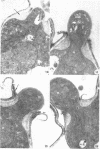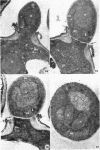Abstract
Microconidiating cultures of “peach-fluffy” (pe, fl; Y8743m, L; FGSC #569) were fixed at various times after the initiation of growth and examined with an electron microscope. Hyphae from which microconidia form are markedly vacuolated and show a much more extensive system of rough endoplasmic reticulum than young vegetative hyphae. A bulge in the hypha presages the start of microconidium formation, followed by the rupture of the outermost wall layers. A thick collar forms around the protruding microconidium due to extensive thickening of the inner wall layer of the parent hypha. At this stage, the cytoplasm of the developing microconidium is still continuous with that of the microsporophore cell from which it arises and is contained by a wall which is derived from the thickened collar. The microconidium is finally isolated from the cytoplasm of the microsporophore by a centripetal extension of the collar. Microconidia differ from macroconidia in having a more extensive endoplasmic reticulum and fewer mitochondria, in addition to being smaller and having a single nucleus.
Full text
PDF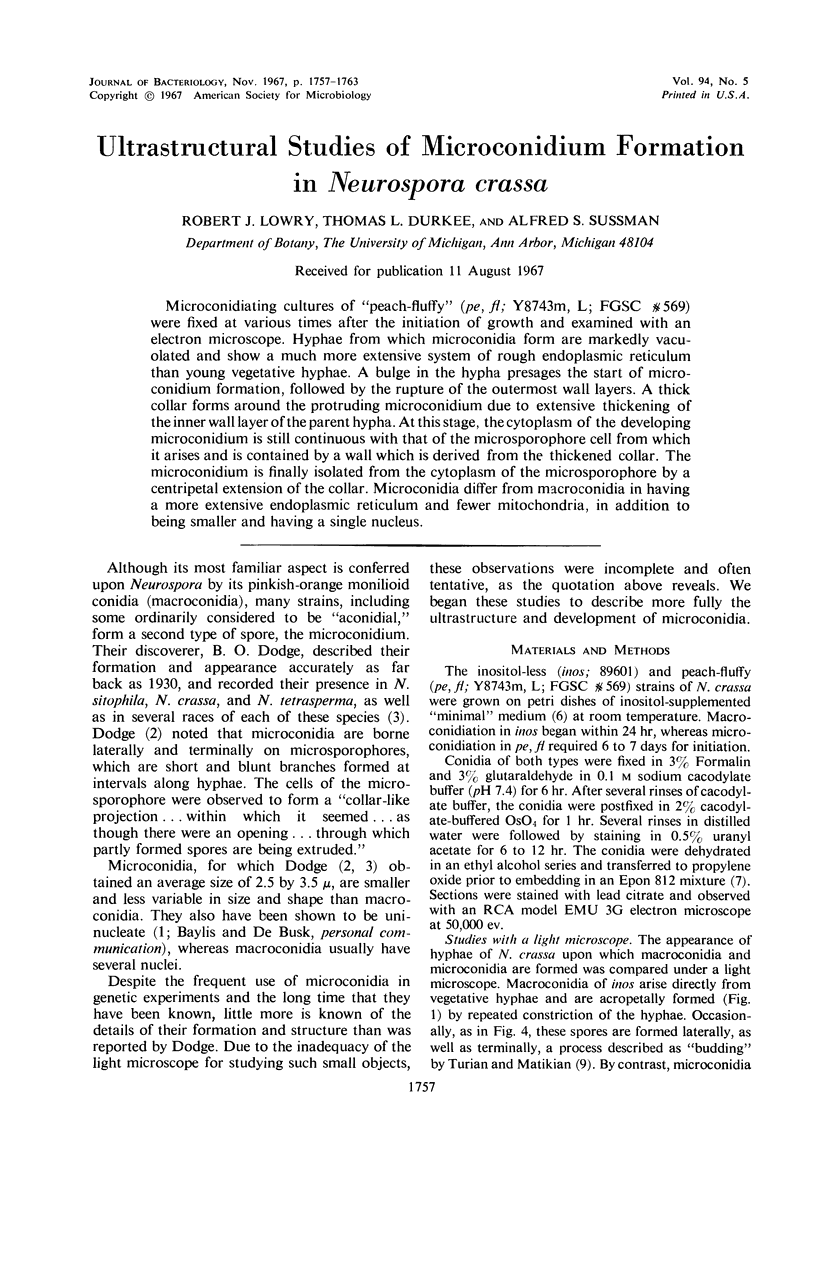
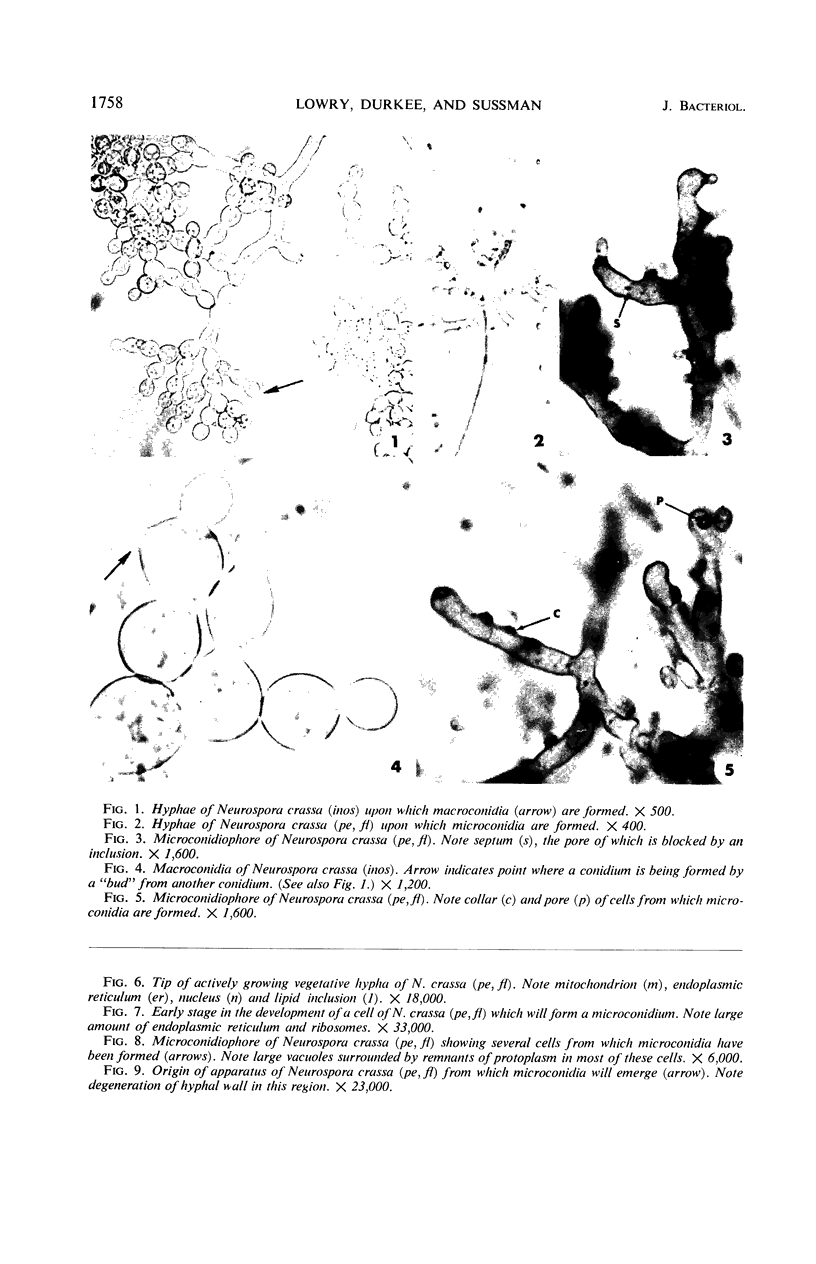
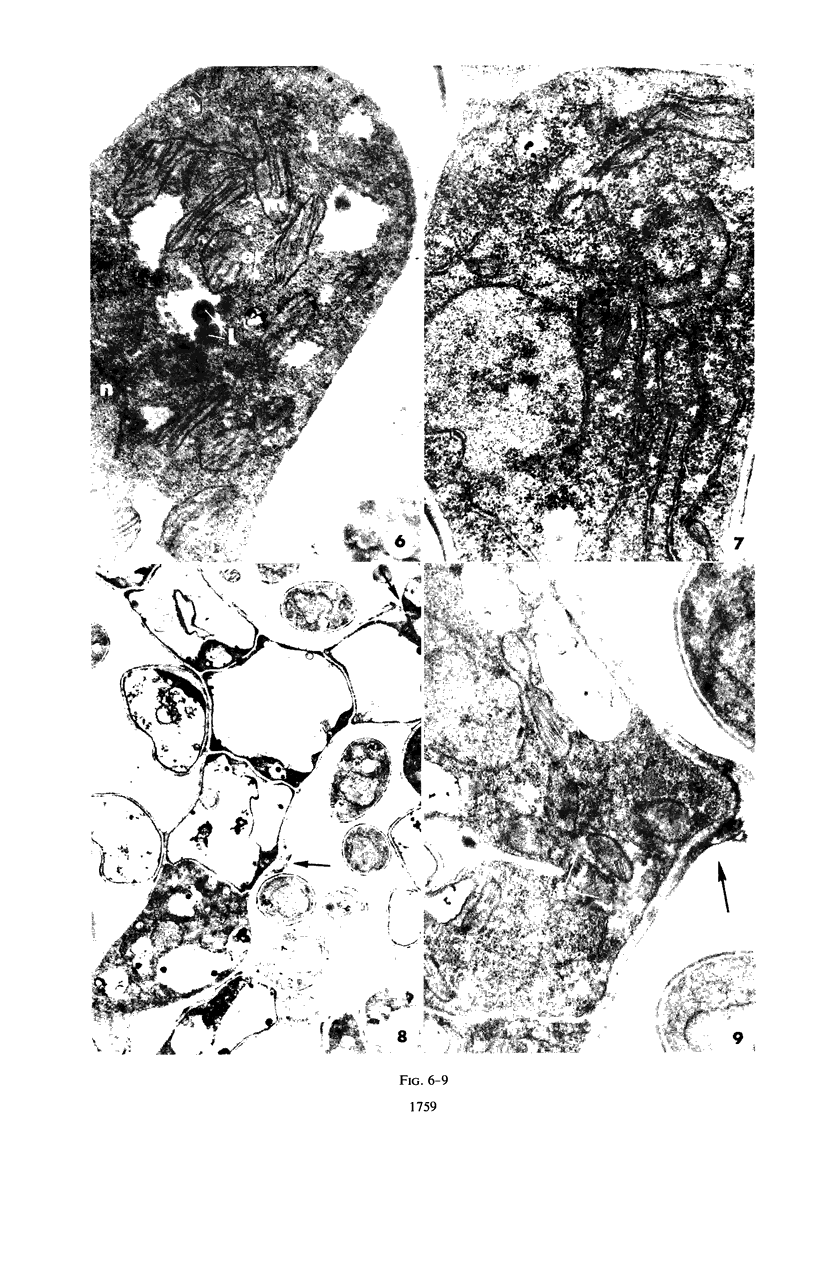
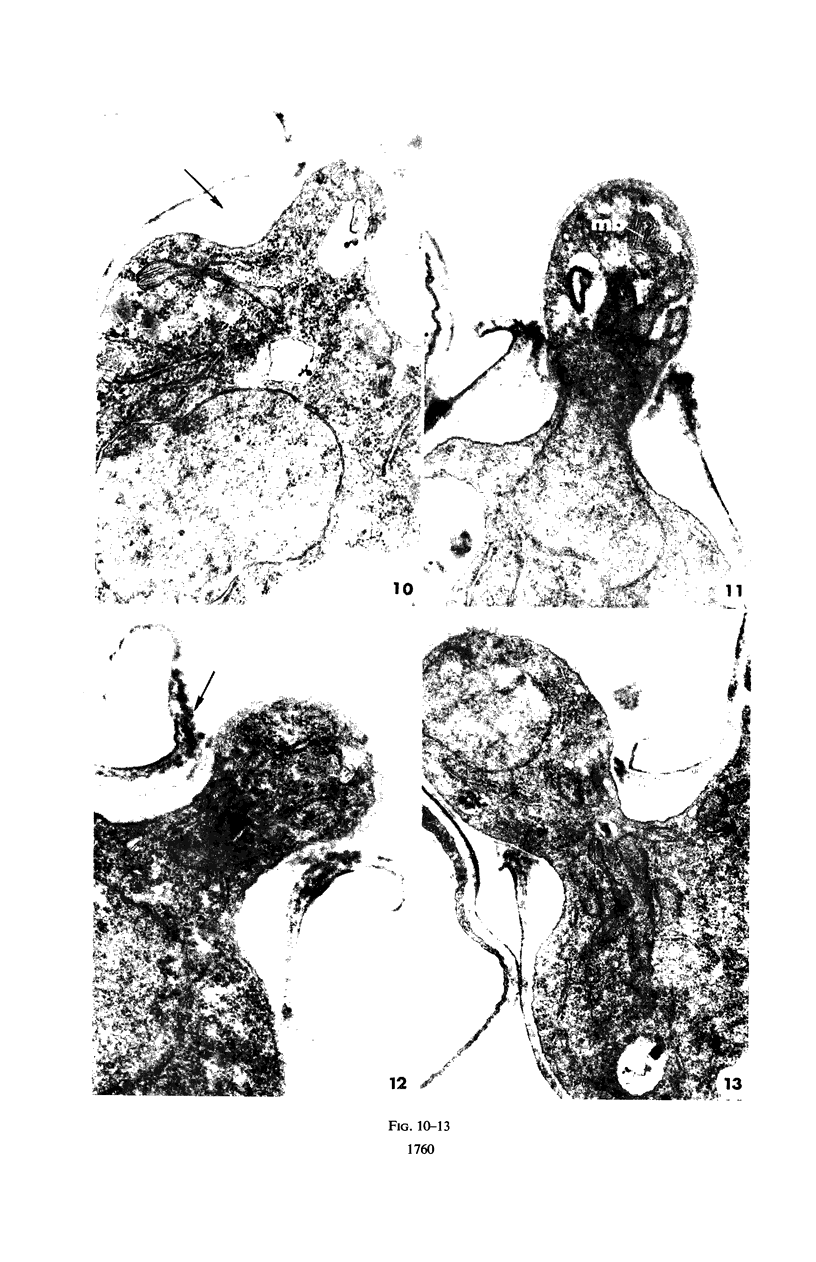
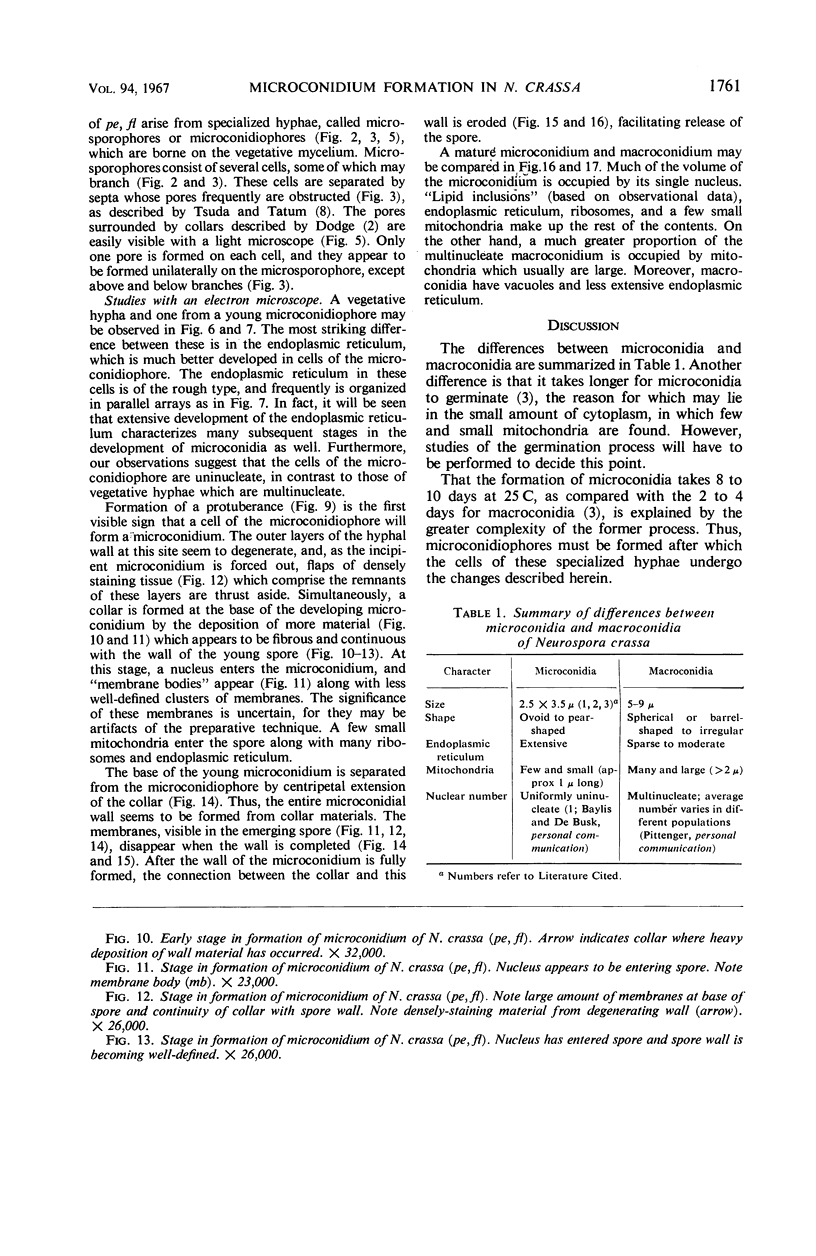
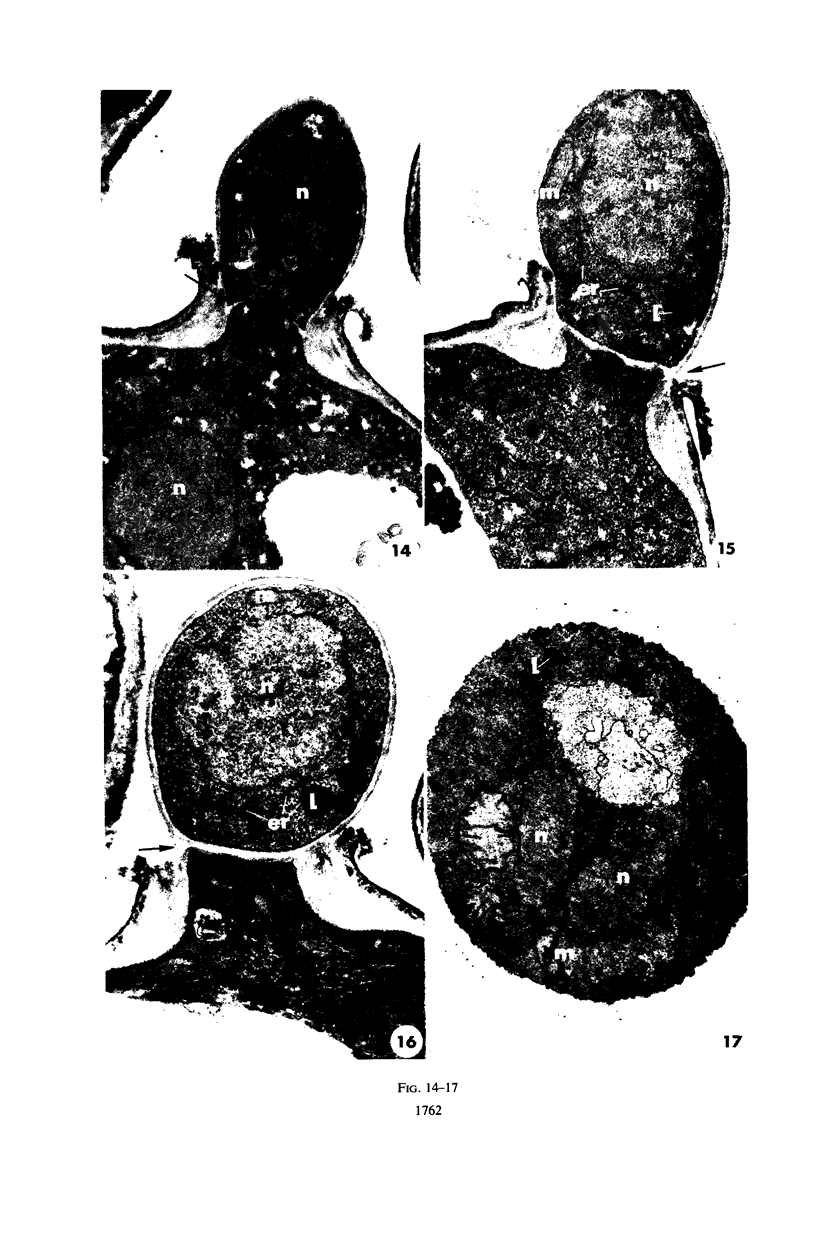

Images in this article
Selected References
These references are in PubMed. This may not be the complete list of references from this article.
- Barratt R. W., Garnjobst L. Genetics of a Colonial Microconidiating Mutant Strain of Neurospora Crassa. Genetics. 1949 Jul;34(4):351–369. doi: 10.1093/genetics/34.4.351. [DOI] [PMC free article] [PubMed] [Google Scholar]
- LUCK D. J. THE INFLUENCE OF PRECURSOR POOL SIZE ON MITOCHONDRIAL COMPOSITION IN NEUROSPORA CRASSA. J Cell Biol. 1965 Mar;24:445–460. doi: 10.1083/jcb.24.3.445. [DOI] [PMC free article] [PubMed] [Google Scholar]
- Richmond D. V., Somers E., Millington P. F. Studies on the fungitoxicity of captan. V. Electron microscopy of captan-treated Neurospora crassa conidia. Ann Appl Biol. 1967 Apr;59(2):233–237. doi: 10.1111/j.1744-7348.1967.tb04431.x. [DOI] [PubMed] [Google Scholar]
- SPORN M. B., WANKO T., DINGMAN W. The isolation of cell nuclei from rat brain. J Cell Biol. 1962 Oct;15:109–120. doi: 10.1083/jcb.15.1.109. [DOI] [PMC free article] [PubMed] [Google Scholar]
- TSUDA S., TATUM E. L. Intracellular crystalline ergosterol in Neurospora. J Biophys Biochem Cytol. 1961 Oct;11:171–177. doi: 10.1083/jcb.11.1.171. [DOI] [PMC free article] [PubMed] [Google Scholar]
- Weiss B., Turian G. A study of conidiation in Neurospora crassa. J Gen Microbiol. 1966 Sep;44(3):407–418. doi: 10.1099/00221287-44-3-407. [DOI] [PubMed] [Google Scholar]





